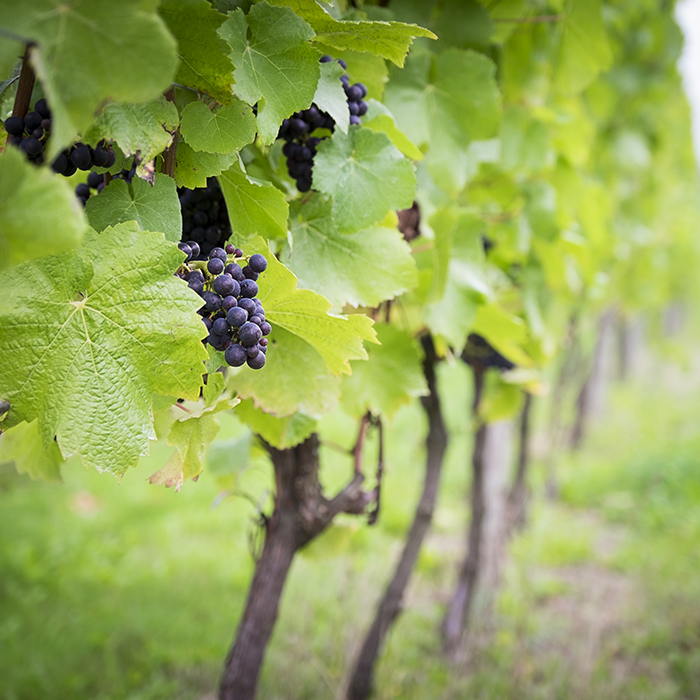Regenerative viticulture
Author: Mark Pardoe MW

How can viticulture revitalise one of our most precious resources? In our 2022 Sustainability Report, Wine Director Mark Pardoe MW takes a closer look at how the choices of winemakers can impact the environment through regenerative viticulture.
We work with some of the world’s finest wine producers, very often using organic and biodynamic methods to produce the very best wines. But now, there is a growing movement towards regeneration – farming based first and foremost on the health of the environment: the basis for both sustainability and quality.
Agriculture and the UN
In 2014, the UN’s Food and Agriculture Organisation (UNFAO) reported that the world’s soils were so depleted that we only had 60 harvests left.
This calamitous depletion of one of our most precious resources has come about because of our reliance on “conventional” (or more appropriately, “industrial”) agriculture. This volume-driven model of crop production is based on the use of synthetic chemical fertilisers, pesticides and herbicides. It uses considerable irrigation and ploughing, and it is almost always relies on monoculture – which is highly detrimental to biodiversity.
This assault on nature sucks life out of soil. Although its energy can be replenished by artificial or natural additives, each year sees a reduction in its fertility and resilience.
Sustainable, organic and biodynamic viticulture
In our industry, the environmental step up from this is “sustainable viticulture”. With a focus on recording and reducing treatments and inputs, this is a worthy approach – but nevertheless, chemical treatments are still allowed, and it will not guarantee that land continues to be productive over the long term.
Then there are those categories with which wine drinkers will be most familiar: organic and, to a lesser extent, biodynamic practices. Synthetic chemicals are banned in organic farming, and all additives must be from natural compounds. Biodynamics goes further, by incorporating homeopathic treatments and the cycle of nature into its processes. There is much to be said for both systems, not least the greater care and understanding it takes to practice them successfully.
Almost every quality-focused producer will incorporate some or all of the principles of these movements. The use of heavy metals, however, is still permitted. The application of copper sulphate solution, used to combat mildew, means an eventual build-up of heavy metal in the soil.
A new approach: regenerative viticulture
Today, there is a growing movement for a new approach. Regenerative Agriculture (also referred to as Conservation Agriculture) is gathering momentum, and these practices are beginning to be adopted in viticulture. The essential difference here is that the focus is on the health of the soil, rather than the crop.
While elements of the practices above still feature, critically, the vineyards are not routinely tilled. . Not only does this reduce compaction of the soil – which compromises its ability to absorb water – it also allows the complex underground world of mycorrhizal fungi, bacteria, nematodes, arthropods and worms to flourish. This is the soil food web, and it is the bedrock of a healthy ecosystem.
Effects of in the vineyard
Working in tandem with this base and other plants, a vineyard will receive ample nutrition without any artificial intervention. A regenerative approach not only restores the soil’s health, but is also truly sustainable – indefinitely.
Greater complexity and diversity can be achieved by the adoption of elements of agroforestry, where hedgerows and trees are planted in and around the vineyard. This provides shelter and habitat and so increases biodiversity, in turn leading to more balance in the ecosystem.
If the environmental benefits themselves are not compelling enough, there is a clinching argument. Once the conversion has been made, crop yields are unaffected, yet costs are reduced as no treatments need to be bought, and there is minimal use of farm machinery.
Regenerative viticulture in practice
Principles of regenerative viticulture are probably more widely adopted than many would think. Bordeaux is often considered a more traditional market, but several top estates, including Cheval Blanc, have adopted elements including agroforestry. The Sichels at Angludet have been working in this direction for some time; Ben Sichel told us that his soil is now so productive that he hasn’t had to use any fertiliser for several years.
Burgundy, working on its smaller scale, has many producers who understand the benefits of soil health. Many of them work within a biodynamic framework that also affords extra respect for the soil.
What does the future hold for regenerative viticulture?
Regenerative viticulture (and farming) is not a new idea. It has been around for a generation, but the movement is gathering renewed pace. This is a complex subject, and these few words hardly scratch the surface.
For anyone wishing to know more, there is an excellent book on the topic recently published by Jaie Goode, and on Netflix you can watch the American-produced “Kiss the Ground”. But you can be sure that regenerative farming is a term that you will begin to hear increasingly often, especially in the world of wine.
Discover more articles on sustainability here.


